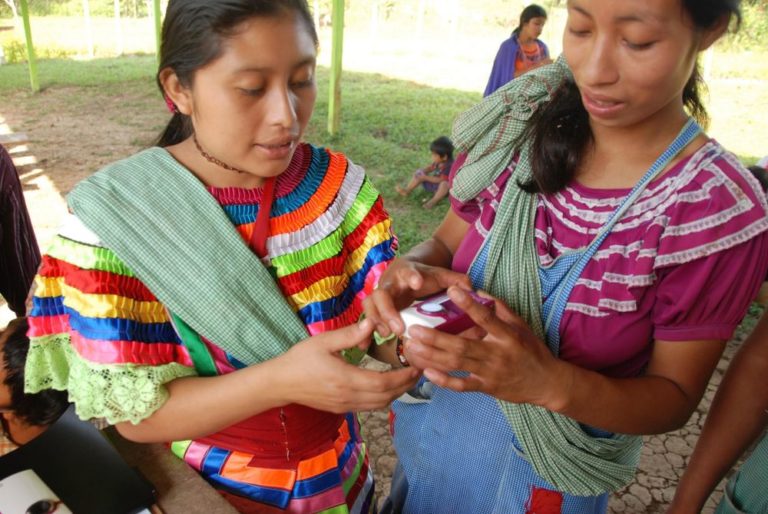
Image by Emily Jacobi/Digital Democracy..
On Social Conventions and Getting to the Heart of How We Are
It began when I was a teenager. Skeptical of why I was being asked, with a adolescent’s proper disdain for convention, I felt a certain squeamishness around the phrase “How are you?” How was I? I was a teenager! I was experiencing all sorts of things — good, bad, mysterious, and otherwise. How could all that be encapsulated with a standard response like “I’m fine”?
As I’ve grown older I’ve mellowed. I appreciate “How are you?” as a ritual that encourages conversation, especially between relative strangers. There is a way of asking, of using eye contact and tone of voice, that indicates the questioner is genuinely interested. Even when its use is perfunctory, asking “How are you?” can be an initial step that leads to deeper conversation.
Even so, I still go through periods of feeling frustrated by the social convention. When I most need to be asked and heard in my response, I am most unsure whether I can answer the question honestly. I’ve watched as I’ve asked the question out of convention to friends, coworkers, and housemates, when I didn’t really have the time or space to fully listen to the answers in all their messy, complicated glory.

It was when I traveled to Chiapas, Mexico a few years ago that I learned a different way to approach this standard question. Working with a community of Mayan villagers who were facing eviction from the Mexican authorities, my organization, Digital Democracy, was training them in photography, video, and satellite communications. I was working specifically with women in the community, most of whom only spoke a few words of Spanish, so I learned a few words of their language, Tzoltzil, one of the family of Mayan languages still spoken today. K’uxa-elan? they taught me to ask as I greeted people in community. “How is your heart?” is the English translation.
How is your heart? I would practice asking the villagers — to grandmothers (abuelas) and little kids alike. “My heart is seated” (their poetic way of saying “my heart is at peace”) was the most common response, but they deployed dozens of heart-centered metaphors to describe how they were doing, far beyond what I was capable of learning in my days there.
How is your heart? It, too, is a social convention in the Tzotzil Mayan community, yet, when asked in English, has a tender quality to it and sends a signal from the questioner: Hey, I really care about you and how you are doing.

I’ve practiced asking it, both of others and of myself. It’s not a question I’m likely to pose to a random person on the street. And I certainly won’t ask it of my housemate when I pass her in the kitchen as I’m running out the door to catch the train. But, when I want to take a moment to settle in, to catch up with that same housemate over tea, or to indicate that I am open to deeper connection to a new friend, it’s a question that is surprisingly appropriate — partly because it is a question we so rarely ask ourselves.
“How is your heart?” has quite a few things going for it over “How are you?” It is more specific, allowing the person being asked to focus on just one aspect of their complex being. The unexpected question implicitly gives permission to the person being asked and allows them to pause, check in with their heart (both literally and metaphorically), and answer in a way that is likely to be genuine. Even if the person being asked isn’t interested in sharing a vulnerable response, a response like “my heart is angry” or “my heart is closed” is acceptable, giving the questioner an idea of how to transition or appropriately end the conversation.
How is your heart? When we start conversations by connecting our talking selves to our bodies, we bring more of ourselves into the interaction. We might recognize anxiety or stress that was otherwise bubbling under the surface, impacting us without our conscious awareness. Or it may help us recognize a feeling of expansiveness and joy that accompanies spending time with certain friends. Whatever the answer, it is likely to be useful.
When I was younger, I often wondered about the heart as a metaphor. Was it just a poetic expression, a cultural projection on a body part? That seemed the most rational explanation. A Western, scientific worldview taught me that it was simply a part of the body, made of muscle and blood, and any meaning we assigned to it was metaphorical.
Traveling all over the world and working with cultures and languages vastly different from my own, from southeast Asia to southern Africa, from the rainforests of the Amazon to the desert sands of the Sahara, I’ve been pleased to learn how wrong I was. Metaphors for the heart exist in every language I’ve encountered, and the colloquial ways we talk about it. “Heartache” and “the heart of the matter” seem to me to be anything but accidental. There’s a growing body of scientific evidence around this, too, with books like The Heart’s Code connecting ancient traditions to the experience of heart-transplant recipients and the HeartMath Institute’s pioneering research into the way the heart and brain communicate with one another in a more reciprocal way than previously assumed. What will we know about our hearts 20, 30, 40, 50 years from now? A great deal more that we currently imagine.
So, if you haven’t already, I invite you to take a deep breath and ask yourself: How is your heart? I’m asking because I want to know, because I think it matters. Because I’ve learned that how my heart is doing matters. Because the world of human affairs is messy and complicated, and it seems to me that the more we pay attention to one another’s hearts the better off we’ll all be.

Share your reflection